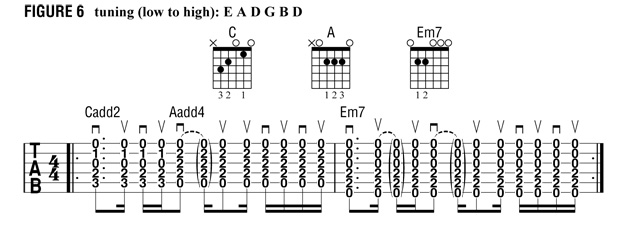The Write Stuff: Tips on Writing One- or Two-Chord Songs

A song containing a few as one or two chords can be just as well-crafted as a far more intricate composition. Of course, the world is full of guitarists who play a D-to-G strum pattern ad infinitum, rhyme “fire” with “desire” and declare that they’ve written a song. You goal as a songwriter is to not be that person.
The Who kept their two-chord masterpiece “My Generation” interesting by changing keys every couple of verses. The same trick rescues Sublime’s “Wrong Way,” another two-chord gem. You might imagine that a one-chord song couldn’t possibly be interesting, yet Bob Marley’s “Get Up, Stand Up” works because of its provocative message and a cool band arrangement, while Harry Nilsson’s “Coconut” became a hit on the strength of his memorable lyrics and vocal performance.
Clearly, if you’re going to limit yourself to one or two chord when writing a song, you should strive to give your composition a fresh angle, something special that’ll transcend its inherent limitations. As a guitarist, you have a distinct advantage in this regard because there are many things you can do with your instrument to make those one, two or however many chords you choose sound fresh.
One effective way to put a twist on otherwise plain chords is to combine open-string drones with fretted chord shapes. A simple approach, illustrated in Figure 2, is to play a single open-string bass note while different chords are played over it.

Or try having open treble strings ring over shifting chords (Figure 3).

Using open-string drones sometimes involves having to find different ways of fretting common chords; in Figure 4, the open G string rings out against unusually-voiced C, Em, and D chords.

An even easier way to spice up the sound of a run-of-the-mill chord is to use a capo to produce a brighter or more colorful voicing. Figures 5A and 5B illustrate how this simple little accessory can give a chord progression a different texture.
All the latest guitar news, interviews, lessons, reviews, deals and more, direct to your inbox!
Play the conventional E, F#m7 and A chords depicted in Figure 5A. Now apply a capo at the second fret of your guitar and play the D, Em7, and G grips shown in Figure 5B. Since the capo has transposed everything up by one whole step, the actual pitches of these chords are now E, F#m7 and A, respectively. While the chords are the same as in Figure 5A, the overall vibe is different.

Many guitarists use altered tunings to breathe new life into chords and progressions; Joni Mitchell, Stephen Stills, Nick Drake, and Ani DiFranco are among the world’s most notorious de-tuners.
There are far too many popular open tunings for us to examine here, so let’s start off with a simple one: Tune your high E string down to D and try playing the chords illustrated in Figure 6. Even changing the tuning of a single string can open up a world of new harmonic possibilities.

There are many other ways to spruce up ordinary chords and progressions with your guitar. One is to vary your pick hand technique to create dynamic and rhythmic contrast. Particularly adept at this is Paul Simon, who alternates between fingerpicking and strumming in many songs, including “The Boxer,” “The Sound of Silence,” ‘Duncan” and “American Tune.”
Perhaps the most important lesson to be gleaned from our discussion is that a songwriter needs not know lots of theory or even chords to be successful. Disparate artists like Chuck Berry, Neil Young, John Fogerty and Simon have created many enduring classics using simple chord progressions, which they jazzed up, so to speak, with some memorable but hardly complicated guitar playing.
None of them began as a genius. All started out with a guitar, a few chords, and their fingers. You’re all set.
